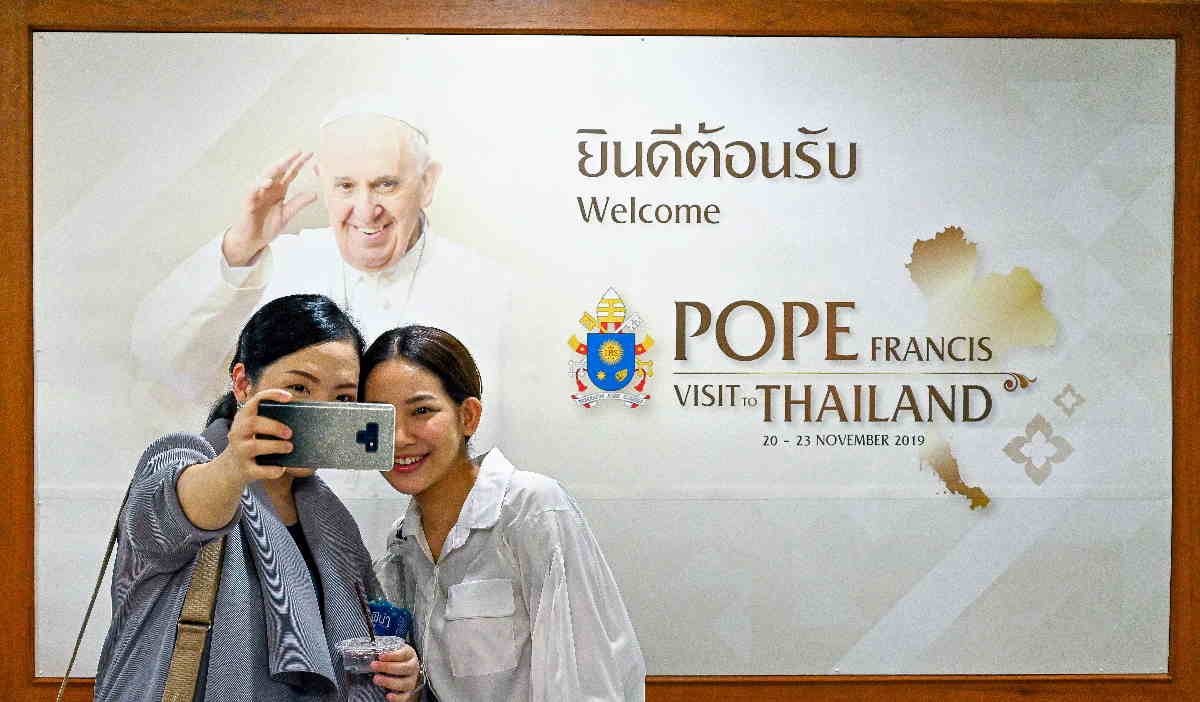Pope Francis will travel to Thailand in November, the Vatican said Friday, in a visit to Asia that will sweep in the Japanese cities of Hiroshima and Nagasaki which were both decimated by atomic bombs in 1945.
It has been nearly four decades since a pontiff visited Thailand and Japan, both Buddhist-majority countries.
The late Pope John Paul II went to Japan – where Shinto and Buddhism are the main religions – in 1981, and he travelled to Thailand three years later where he met with the late King Rama IX and the Queen Mother.
The current pontiff will visit Thailand from 20-23 November, and then to Japan on 26 November, the Vatican said.
In Bangkok, Pope Francis will "preside at religious ceremonies and pastoral visits to Catholic communities," said a press statement from the Catholic Bishops' Conference of Thailand.
He will hold "two masses", added Monsignor Vissanu Thanya-anan of the Catholic Bishops Conference of Thailand.
The four-day papal visit will mark the 350th anniversary of the founding of the "Mission de Siam", which was first established by Pope Clement IX in 1669.
Today, the 388,000-strong Christian community makes up an estimated one percent of the population in Thailand, with the majority residing in the north and many within ethnic minority groups like the Jarai and the Akha.
Embattled ethnic groups, like the Montagnards who fled religious persecution in neighbouring communist Vietnam, also reside in Thailand seeking asylum.
Sister Ana Rosa Sivori, the Pope's second cousin who runs a Catholic girls' school in northeast Thailand, said his visit to a Buddhist-majority Thailand is meant as an outreach to other religions.
"This visit shows his desire... to bring a message of peace," she told media, adding that she would be with her cousin during the Bangkok visit and hopes for some "private" time.
A-bomb sites
The Vatican also provided more details of a visit to Japan, which was announced in January. The Pope had wanted to work in the country as a missionary in his youth but the plan was abandoned following a lung operation.
Japan is home to some 450,000 Catholics and 510,000 Protestants.
"During the latter visit, the Holy Father will visit Tokyo, Nagasaki, and Hiroshima," said the statement, adding that an official schedule will be provided at a later date.
Hiroshima and Nagasaki were decimated after the United States (US) dropped nuclear bombs at the end of World War II in 1945.
More than 140,000 people were killed in Hiroshima, while the port city of Nagasaki suffered a death toll of 74,000.
The Pope has referenced the bombings in the past.
In January last year, he printed cards with a 1945 photo of victims of the Nagasaki bombing, inscribing the words "the fruit of war" in Italian on the card above his signature.
The photo, captured by American photographer Joe O'Donnell, showed a young boy standing ramrod straight carrying his dead younger brother on his back while waiting for his turn at a cremation site.
Since Pope Francis' election six years ago, he has made two trips to Asia, visiting the Philippines and Sri Lanka in 2014, followed by Myanmar and Bangladesh in 2017.
In Dhaka, he met with Rohingya refugees who fled from Myanmar following a brutal military crackdown, which United Nations (UN) investigators have said amounts to "genocide".
Referring to the Muslim minority group as "Rohingya", he asked for their forgiveness for their persecution – his words sparking great controversy in neighbouring Myanmar, where they are reviled as so-called "Bengali" illegal immigrants.
Pope Francis on Tuesday returned to Rome after a weeklong visit to Africa, with stops in Mozambique, Madagascar and Mauritius – a prosperous island nation where he urged citizens to welcome migrants in search of a better life. - AFP
